



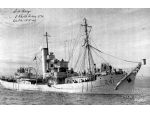







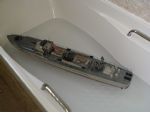

Fun with boats
RICHARD GORDON and his models
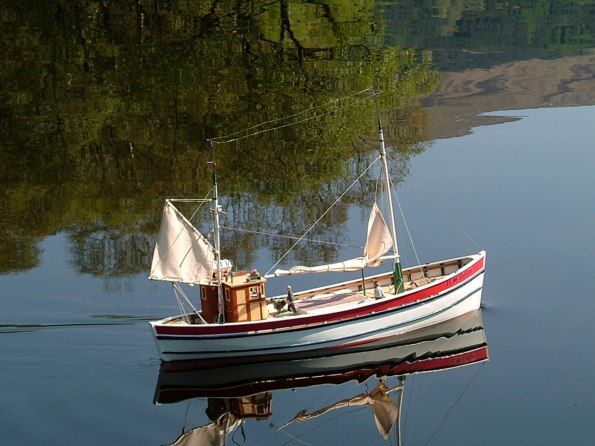
Some months ago during some correspondence with your Editor over an article, it was suggested that I might like to write about some of my boat building experiences over these last few years. I said at the time that he didn’t know his rotten luck, so here goes!
Victoria
When I was young, I built and then invariably crashed model aeroplanes, as gliders especially seemed to like to ignore the DT fuse and head straight for an un-climbable tree in the local glen! Long years of work in a university followed until the early 1980s when my wife and children took me by surprise one birthday and presented me with a box containing the kit for a Patrick Blunt Models (PBM) Albert tug. This kit is no longer available, but at the time it was one of a range of models from this manufacturer. This took me several years of very happy (and very part-time) building to complete, the bow and stern sections being built up from blocks of balsa and requiring shaping to the correct section contours. This was very satisfying to someone who revelled in seeing the eventual shape coming to life under the sandpaper block. This model, named ‘Victoria’ by me, was fitted out with cumbersome (at least compared to today) r/c equipment, sailed well and looked good both in and out of the water, Photos 1 and 2. It is sad to reflect how few models now seem to require this time consuming but satisfying modelling of the hull shape. I note however that a similar model is now available from Mountfleet Models, albeit with a GRP hull.
Anteo
Anyway, this was an extremely satisfying model to build as there were eight sheets of drawings and the parts supplied were of a high quality and this helped encourage me with the project, Photo 3. This model has been much admired on the water by onlookers as it sails across a local loch which doubles as a boating pond for me, Photo 4. Mind you, it is interesting sailing the model when on some days the wind whips up the surface so that it is battling through what amounts to gale force conditions. I incorporated a Graupner oil smoke generator but have been disappointed as the smoke output was almost invisible.
Sir Kay
This was a fascinating model to build as several drawings of the various boats in this class were obtained along with a detailed book from the library depicting the camouflage schemes and colours in the early days of WW2 before radar changed everything. A photo taken at the time by the ‘Picture Post’ of ‘Sir Kay’ at sea was very useful, Photo 5, and Photo 6 is of the model. This model looks great on the water and has given me much pleasure, but I wish that I had tried to weather it a bit, but was unsure of how best to proceed, Photo 7. If in doubt then don’t, is a good maxim!
Hellen
The Artesania semi-scale Hellen trawler kit (currently not in production) followed and proved a simpler model to build than Sir Kay, but was enjoyed as in addition to the preformed hull, it included some intricate work in wood, particularly on the wheelhouse, Photo 8. This model sails well on the loch, Photo 9, and, unlike Anteo and Sir Kay was a good model to construct as it was quite forgiving in the sense that you could make a mistake and it would not be disastrous. After Hellen, a model with more intricacy that would provide a greater challenge was looked for.
Highlander
When first launched, this model rode very high in the water and required a great deal of ballast to bring it down to the water line. As in the meantime I have got older, I do find that the weight of this model with its ballast is a problem and this requires me to be very careful as for example I handle it in and out of a car. However, once on the water with the smoke coming out of the stack and the occasional hooter and seagull cry from the sound module, this model is proving great fun, Photo 11, especially the look of surprise on an unaware bystander’s face when these sounds occur.
S-130
With the help of Dave Milbourn of ACTion R/C Electronics, I have separated the centre motor speed control from the outer two and am using the P94 dual esc and mixer unit to control these and hopefully tighten up the turning circle radius. At the time of writing early in 2010 it is too cold to go to the loch, so here is a domestic test tank picture, Photo 13!
(Within our hobby we tend to promote the idea of being a member of a club whenever possible, but I know from letters and emails that there are many who for practical reasons are not club members or perhaps choose to pursue their hobby alone, because it suits them and their lifestyle better. For these model boat builders, a magazine such as this is their positive link with the hobby as a whole – Editor)
Want the latest issue of Model Boats? Use our magazine locator link to find your nearest stockist!
 Make sure you never miss out on the latest news, product reviews and competitions with our free RSS feed
Make sure you never miss out on the latest news, product reviews and competitions with our free RSS feed

We welcome well written contributions from Website members on almost any aspect of Model Boating with a particular emphasis on practical hints, tips, experience and builds.
In order to maintain a consistent standard and format, all suggestions should first be sent to me by Personal Message for approval in principle. Only a very limited amount of time is available for editing contributions into a suitable format for placing on the website so it is important that the material is well presented, lucid and free from obvious spelling errors. I think it goes without saying that contributions should be illustrated by appropriate photos. I shall be happy to give advice on this.
The Member Contribution area offers space for short informative mini articles which would not normally find a place in Model Boats magazine. It is an opportunity for Website Members to freely share their expertise and experience but I am afraid that virtue is its own reward as there is no budget to offer more material recompense!
I look forward to receiving your suggestions.
Colin Bishop - Website Editor
Model Boats Magazine
- Landing Craft Mini PLan
- Riva Aquarama Build
- Scale Colour, Sound & Speed
Digital Editions
- Access your digital editions
Subscribe Now
- Every issue delivered right to your door
Renew Now
- Save & never miss an issue!











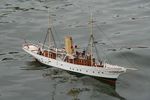
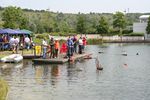

 Register
Register Log-in
Log-in



